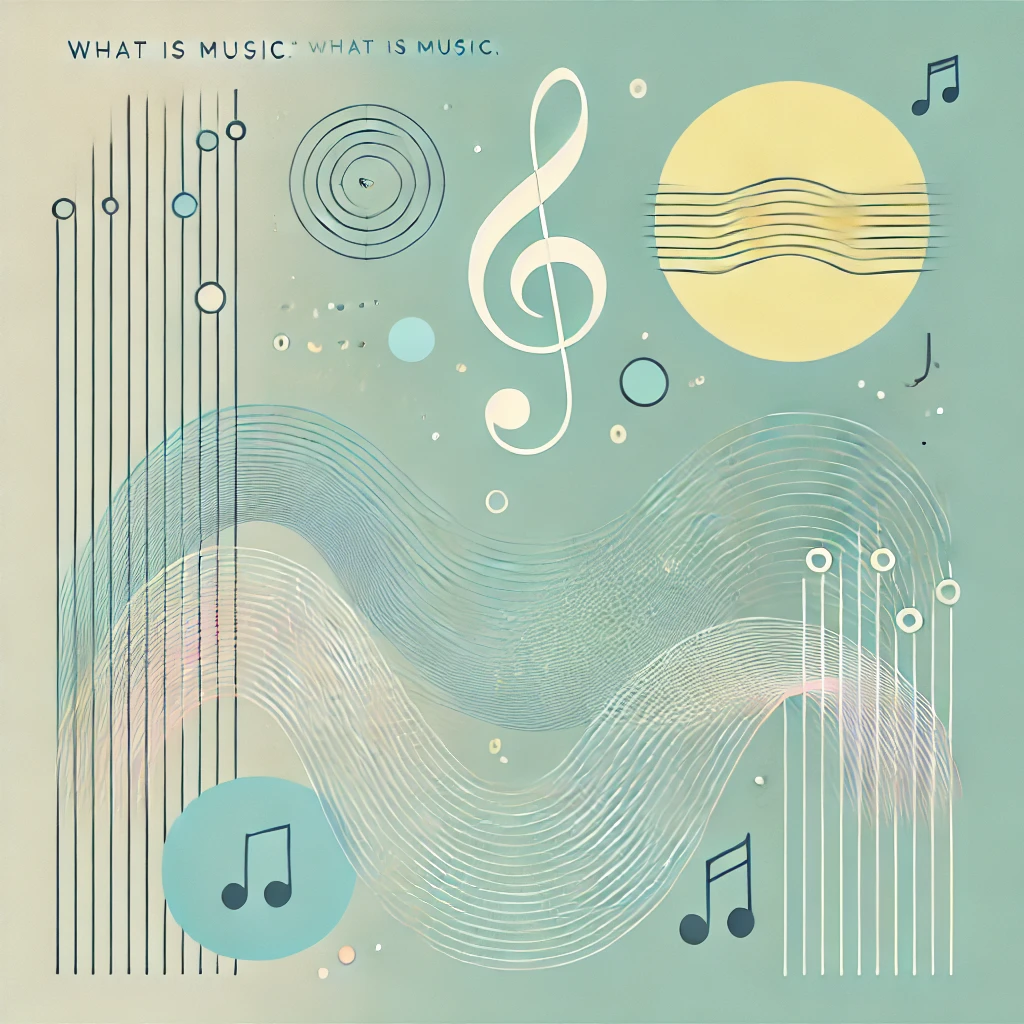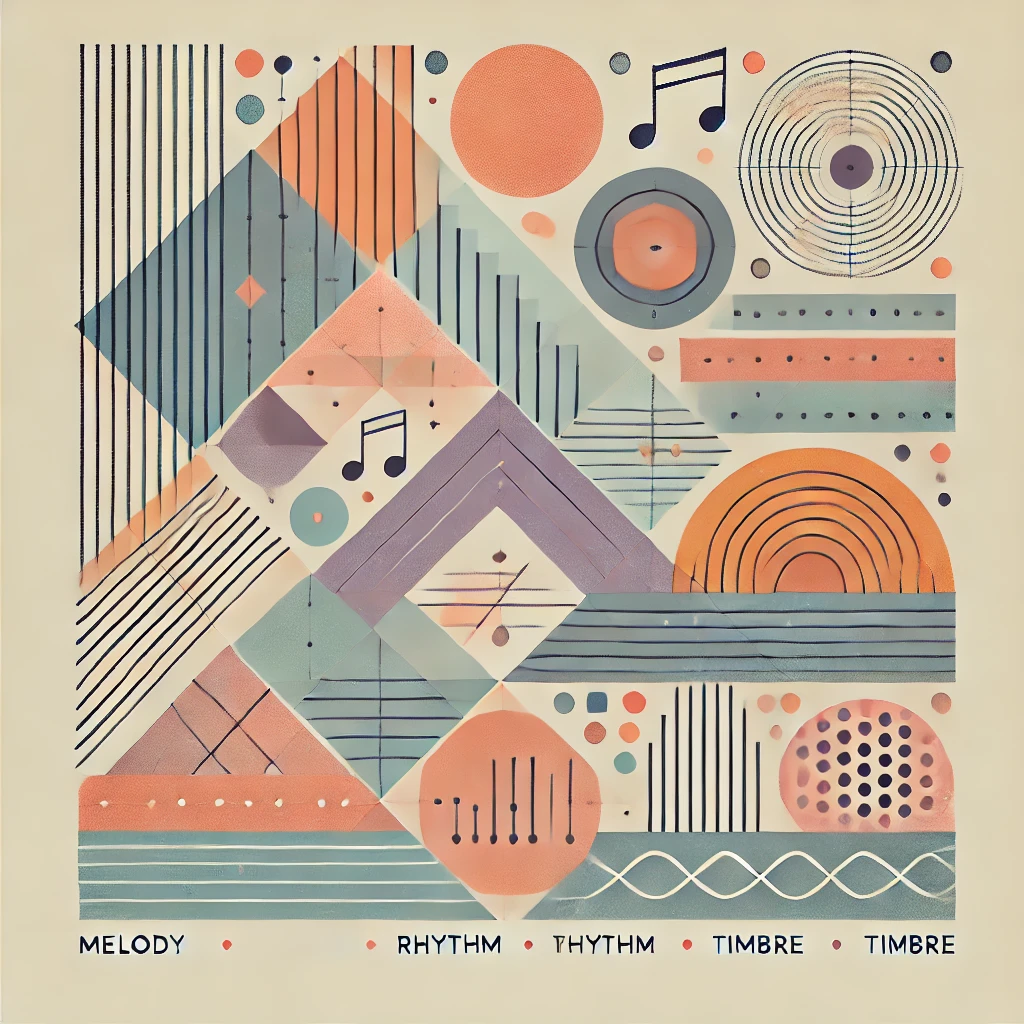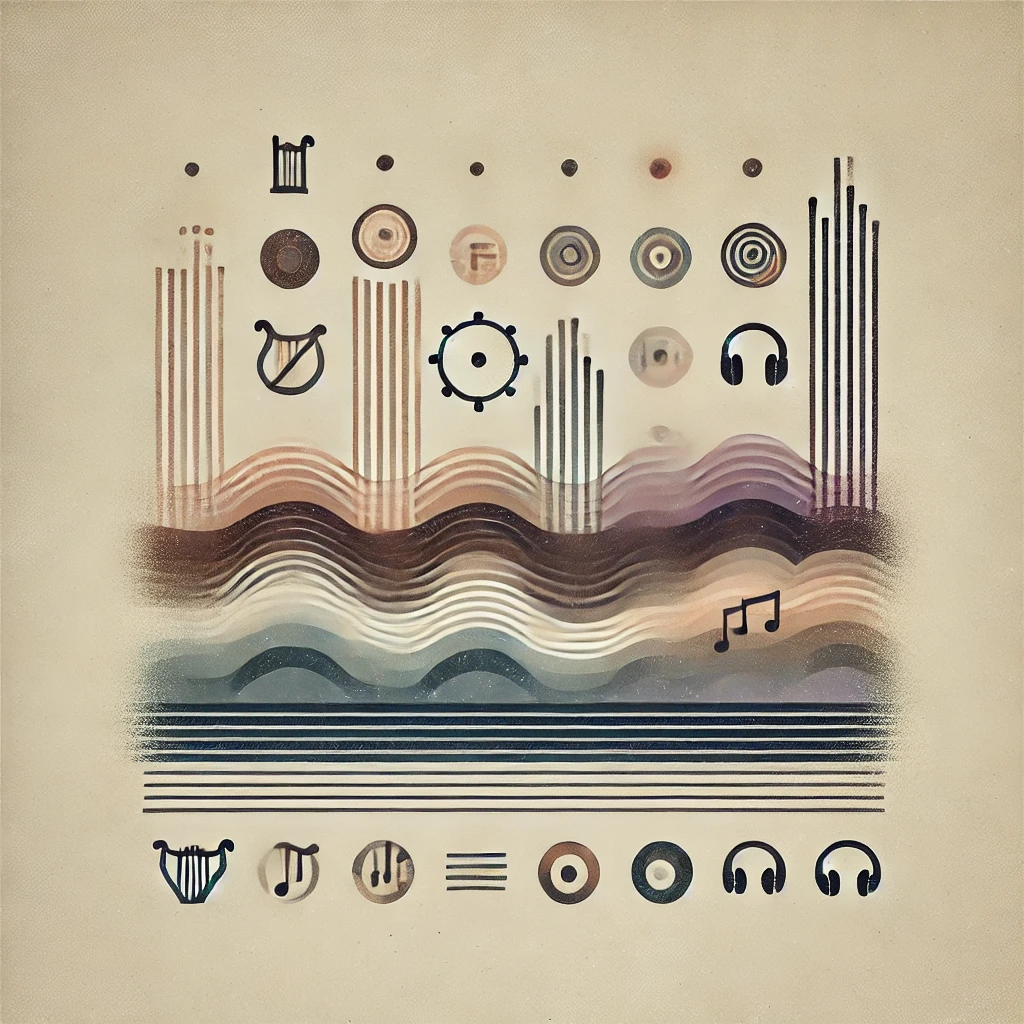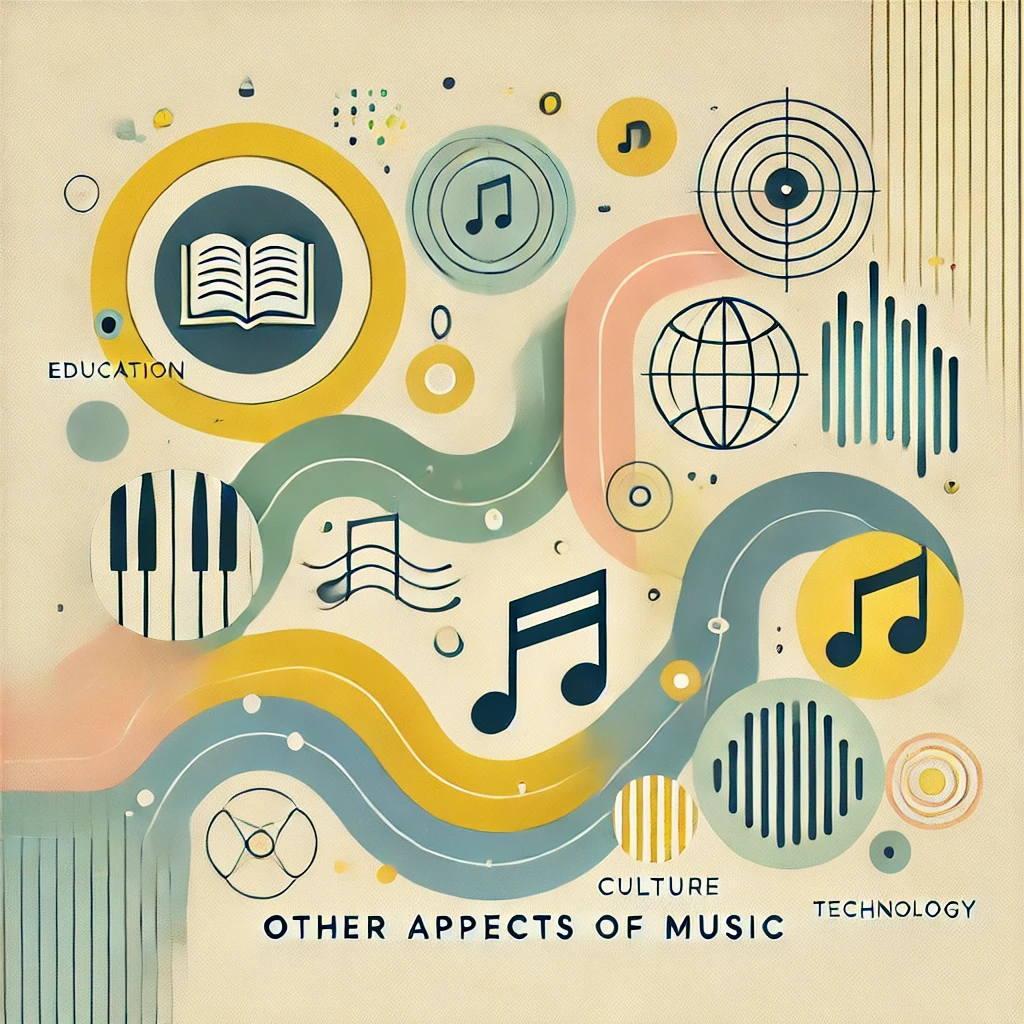Introduction to Music
Music, an intricate and universal form of human expression, transcends cultural and linguistic barriers to convey emotions, stories, and ideas. At its core, music is organized sound, structured through elements such as melody, harmony, rhythm, and timbre. These components work in concert to create compositions that can evoke a wide range of emotional and psychological responses. From the rhythmic beats of tribal drums to the complex symphonies of classical maestros, music’s versatility allows it to adapt to various contexts, serving purposes that range from entertainment and ceremonial functions to therapeutic applications. Its ability to resonate with individuals on a personal level makes music a powerful tool for communication and connection.
Beyond its artistic and cultural significance, music plays a crucial role in enhancing cognitive functions and promoting mental well-being. Neuroscientific research has increasingly illuminated the profound impact that music can have on the brain’s structure and functionality. Engaging with music—whether through listening, performing, or composing—activates multiple regions of the brain, including those responsible for memory, attention, and emotional regulation. This multifaceted stimulation not only fosters neural plasticity, allowing the brain to adapt and reorganize itself, but also supports the development of various cognitive skills. Moreover, music’s therapeutic potential has been harnessed to aid in the treatment of neurological disorders, reduce stress, and improve overall brain health, highlighting its significant role in both personal and collective human experiences.
What is Music

Music is fundamentally an art form that organizes sounds and silences over time to produce a composition that is both structured and expressive. It encompasses a wide range of genres, styles, and traditions, each with its unique characteristics and cultural significance. At its essence, music combines pitch, duration, dynamics, and timbre to create patterns that can be both simple and complex. These patterns are often arranged in ways that are aesthetically pleasing or emotionally stirring to the listener. Whether it is the intricate melodies of a jazz improvisation, the driving rhythms of a rock anthem, or the delicate harmonies of a choral piece, music serves as a medium through which artists can explore and express the depths of human experience.
Moreover, music functions as a social glue, fostering community and shared identity among individuals. It plays a pivotal role in rituals, celebrations, and everyday social interactions, acting as a universal language that bridges diverse backgrounds and perspectives. Music’s ability to convey nuanced emotions and narratives makes it an essential tool for storytelling and cultural preservation. Additionally, in the realm of personal development, music offers a means of self-expression and emotional regulation, allowing individuals to process complex feelings and experiences. This dual capacity for both individual introspection and collective expression underscores music’s profound impact on human society and individual well-being.
Elements of Music

The foundation of any musical piece lies in its fundamental elements: melody, harmony, rhythm, and timbre. Melody is the sequence of notes that are perceived as a single entity, often serving as the main theme or the most memorable part of a composition. It is characterized by its pitch and rhythm, creating a contour that can be easily followed and remembered. Harmony, on the other hand, involves the combination of different pitches played or sung simultaneously, enriching the texture and depth of the music. It provides the backdrop against which the melody stands, adding emotional complexity and nuance to the overall sound.
Rhythm is the temporal aspect of music, encompassing the timing of notes and the pattern of beats that give music its flow and structure. It is the driving force that propels a piece forward, influencing its energy and movement. Tempo, the speed at which a piece is played, and meter, the organization of beats into regular patterns, are critical components of rhythm. Timbre, often referred to as the “color” of music, distinguishes different sounds and instruments from one another. It is what allows a violin to sound different from a piano, even when they play the same pitch. Together, these elements interact harmoniously to create the rich and diverse tapestry that characterizes music, enabling it to evoke a wide spectrum of emotions and responses.
History of Music

The history of music is as old as humanity itself, evolving alongside human civilization and reflecting the cultural, social, and technological changes of each era. Early music was deeply intertwined with rituals, religious ceremonies, and communal gatherings, serving both functional and expressive purposes. Primitive instruments such as drums, flutes, and stringed instruments were crafted from available materials, laying the groundwork for musical development. As societies advanced, so did musical complexity, with the introduction of notation systems in ancient civilizations like Mesopotamia, Egypt, and Greece, allowing for the preservation and transmission of musical knowledge across generations.
The Middle Ages saw the rise of sacred music, particularly within the Christian church, with Gregorian chants dominating the musical landscape. The Renaissance period brought a flourish of polyphony and the exploration of secular themes, while the Baroque era introduced elaborate compositions and the establishment of musical forms such as the concerto and the fugue. The Classical period emphasized clarity, balance, and form, paving the way for the Romantic era’s emphasis on emotional expression and individualism. The 20th and 21st centuries have witnessed unprecedented diversity in musical styles, driven by technological advancements and globalization. Genres such as jazz, rock, electronic, and hip-hop have emerged, each contributing to the rich and ever-evolving narrative of music history.
Healing Power of Music

Music possesses a remarkable ability to heal and enhance the brain’s capacity, making it a powerful tool in the field of neuroscience and therapy. Therapeutic applications of music, often referred to as music therapy, leverage its emotional and cognitive effects to promote mental health and aid in the recovery from various neurological conditions. Studies have shown that music can reduce symptoms of anxiety, depression, and stress by triggering the release of neurotransmitters such as dopamine and serotonin, which are associated with feelings of pleasure and well-being. Additionally, music therapy has been effective in improving mood, enhancing emotional expression, and fostering social connections among individuals dealing with mental health challenges.
In the realm of neurological rehabilitation, music has been instrumental in aiding patients with conditions such as stroke, Parkinson’s disease, and traumatic brain injuries. Rhythm and melody can stimulate brain regions involved in motor control, aiding in the recovery of movement and coordination. For example, rhythmic auditory stimulation has been used to improve gait and balance in Parkinson’s patients, while singing and playing instruments can enhance speech and language abilities in stroke survivors. Furthermore, music’s ability to engage multiple cognitive functions simultaneously—such as memory, attention, and executive function—makes it an effective intervention for enhancing brain plasticity and promoting cognitive resilience. The intersection of music and neuroscience continues to reveal the profound ways in which music can support and enhance brain health.
Other Aspects of Music

Beyond its therapeutic and cognitive benefits, music plays a significant role in various other aspects of human life, including education, technology, and cultural identity. In education, music is recognized for its ability to enhance learning and academic performance. Incorporating music into educational curricula can improve skills such as memory, spatial-temporal reasoning, and language acquisition. Learning to play an instrument or engaging in musical activities fosters discipline, creativity, and teamwork, contributing to the holistic development of individuals. Music education also provides a platform for cultural exchange and appreciation, promoting diversity and understanding among students from different backgrounds.
In the realm of technology, music has been a driving force behind innovations in audio engineering, digital media, and interactive entertainment. The advent of recording technology, electronic instruments, and digital distribution platforms has transformed how music is created, produced, and consumed. Advances in artificial intelligence and machine learning are now enabling the creation of new musical compositions and personalized listening experiences, further expanding the boundaries of musical creativity. Additionally, music plays a pivotal role in various industries such as film, advertising, and gaming, where it enhances storytelling, brand identity, and user engagement. As technology continues to evolve, so too will the ways in which music intersects with and enriches multiple facets of modern life.
Wrap-Up Takeaway

In unraveling the multifaceted magic of music, it becomes evident that music is not merely an art form but a fundamental aspect of human existence that intertwines with our cognitive, emotional, and social lives. Its ability to transcend barriers, evoke deep emotions, and enhance brain functionality underscores its unparalleled significance across cultures and epochs. From the simple rhythms of ancient drums to the sophisticated compositions of contemporary symphonies, music continues to evolve, reflecting and shaping the human experience in profound ways.
The journey through the various dimensions of music—its definition, elements, history, healing power, and broader impacts—reveals a tapestry of interconnected threads that highlight its indispensable role in fostering personal growth, societal cohesion, and mental well-being. As neuroscience continues to uncover the intricate ways in which music influences the brain, the therapeutic potential of music becomes increasingly recognized and harnessed in medical and psychological practices. Ultimately, music stands as a testament to the human spirit’s innate desire to create, connect, and heal, offering a timeless medium through which we can explore the depths of our humanity and enhance our cognitive capacities.
